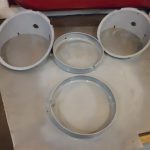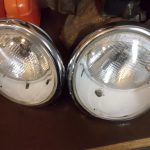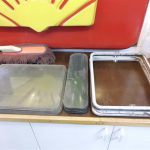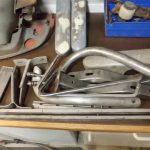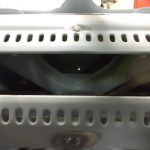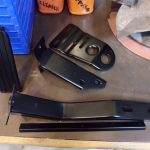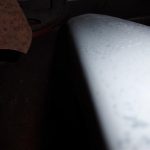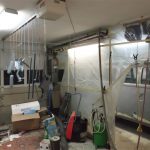-
Recent Posts
Recent Comments
Category Archives: Bus
Engine Tins Media Blasted
Work began on the various sheetmetal parts (known in VW vernacular as “tins”) that direct air to and through the cylinder cooling fins. Being aircooled instead of watercooled, this is one area where the bus has much more in common with a modern light aircraft than any modern road vehicle. These parts are all thin steel and have been exposed to years of extreme vibration and temperature fluctuations; because of this there were many stress cracked spots that required welding.



Bumpers Epoxy Primed
The bumpers received another coat of epoxy primer to seal the filled areas. Also, (not shown) the front door window frames were sanded and re-primed. All of these items (bumpers, window frames) are the foundation pieces for many of the small parts painted earlier. Once these parts are completed then the window and bumper sub-assemblies can be built using the refinished parts and new rubber seals.
Small Parts Painted & Bumper Bodywork
Kumulus Weiß und See Blau!
The color coats arrived today; the bus will be Cumulus White on the inside and top, and “Sea Blue” (Lake Blue) on the bottom to match the original color scheme. I was able to get one white part far enough along in the prep process to paint as a color test, it’s an extremely close match to an area of protected original cumulus white I found and polished. Unfortunately the sea blue doesn’t match a protected original sea blue area that I found and polished. There were multiple sea blues in ’67, both sharing the same VW paint code, so that’s likely the source of confusion; one was darker and less green (the original bus color) and the other was lighter with a green/teal tint (what was sent). The paint supplier has been great so far so hopefully this won’t be a problem to fix.
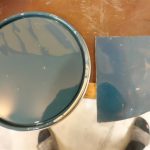
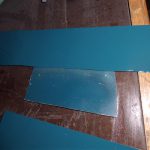
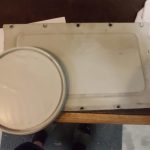
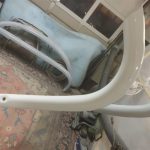
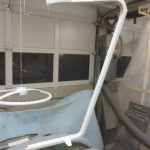
Small Part Progress
Another round of primer was completed on the current batch of small parts being restored. The bumper over-riders are becoming very smooth and the rust pits are no longer visible. In the process of painting the small parts on the opposite side of the garage I found that the over spray that does occur is just dust by the time it reaches the cabinets. Because of this I took down part of the bus bubble to re-gain working room and improve lighting.
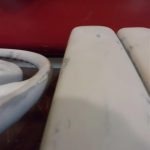

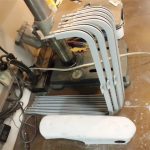

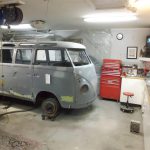
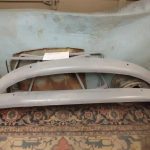
First Chassis Parts Painted
High-Build Primer for Small Parts
One of the pop-out window frames was media blasted and all of the small parts that were epoxy primed earlier in the week were primed with high-build urethane primer. The purpose of the epoxy primer is to seal out moisture and form a protective shell around the metal, however it is not easily sand-able as it quickly clogs sandpaper. The purpose of the high-build urethane primer is to fill small surface imperfections to create a smooth surface, the urethane primer is readily sand-able and meant for this purpose. The right picture isn’t great but it shows how this works, the let side of the part has been sanded and the holes left by the rust pits are much shallower, the right side is unsanded and the holes left by the rust pits are still very deep. (compare to the un-blasted part at far left) Further sanding and additional coats of high-build primer (if needed) will yield a perfectly flat surface.
Epoxy Priming of Small Parts
Headlight Assembly Restoration
The headlight assemblies that were media blasted yesterday were primed and painted today. Once the paint was dry the bezels and lens were cleaned and polished, then everything was re-assembled. More media blasting was completed on the vent window frames and other miscellaneous parts. The pop-out windows were disassembled; all of the rubber was dry-rotted so it took considerable time picking all of the rubber out of the sealing channels before the screws could be loosened to separated the frame halves and release the glass. There was substantial rust and the screws are tiny, so many had to be drilled out. Most of the frames can be salvaged and the drilled screw-holes re-tapped for slightly over-sized screws. (The head of the over-sized screws is the same size, so no difference will be visible once assembled)
